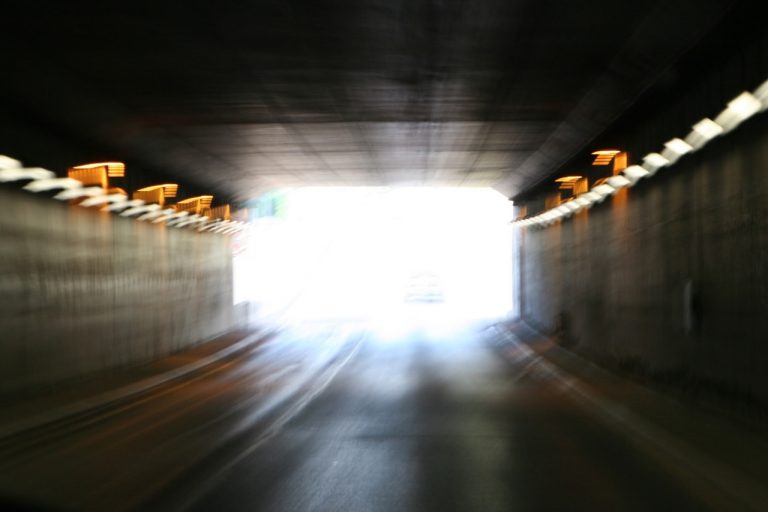There is an unusual law in the observance of Chanukah which is unique among mitzvos. The Shulchan Aruch rules that one who doesn’t have the opportunity to kindle Chanukah lights or to have someone lighting on his behalf in his home becomes obligated, upon merely seeing Chanukah lights anywhere, to recite the blessing “She’asah Nissim,” “Who performed miracles” (Or ch.676.-3, in accordance with Rashi’s interpretation of the text in Shabbos 23a).
 Surely this is exceptional. If, due to circumstances beyond one’s control, one doesn’t eat matzoh on Pesach, or take hold of a lulav on Sukkot, or a hear a shofar on Rosh Hashanah, one is absolved of these obligations. If the mitzvah of Chanukah lights were solely to kindle them, then the inability to do so would similarly terminate the issue. However, such is not the case.
Surely this is exceptional. If, due to circumstances beyond one’s control, one doesn’t eat matzoh on Pesach, or take hold of a lulav on Sukkot, or a hear a shofar on Rosh Hashanah, one is absolved of these obligations. If the mitzvah of Chanukah lights were solely to kindle them, then the inability to do so would similarly terminate the issue. However, such is not the case.
I would like to suggest a possible explanation for this unique practice. It seems to me that beyond the actual kindling of lights, quintessentially Chanukah imposes an obligation upon Jews to see things in a special light, to apprehend reality in a unique manner.
There is actually no such thing as purely autonomous objective reality. No event which takes place in the world presents itself on its own and proclaims “I am a fact.” Even in such a mathematically precise field as particle physics, the Heisenberg Uncertainty Principle has argued that the role of the observer is inseparable from a complete determination of the object.
Certainly in the world of human historical happenings, determining what “really” happened and what are the responsible causes or the expected consequences depends, to a great degree, upon how we see it.
How should a Jew see and evaluate the flow of events? A profound Midrashic teaching (Bereishis Rabbah 43:8) declares that the Jewish People, from its inception, has viewed things in a uniquely Jewish way, and this underlies all of Israel’s blessings. The Midrash asks, what is the source of Israel’s entitlement to the priestly blessing (Birchas Kohanim) which begins with the words “So (koh) shall you bless the children of Israel”? The Midrash then answers:
“from Avraham, regarding whom it is written, ‘So (koh) shall be your seed’ (Bereishis 15:5);
“from Yitzchak, for it is written, ‘And I and this lad will go yonder (ad koh)’ (Bereishis 22:5);
“from Yaakov, for it says, ‘So (koh) shall you say to the house of Yaakov”‘ (Shemos 19:3).
It seems to me that each one of the sources cited and characterized by the term “koh” all relate to a singular way of seeing. When the Creator promised Avraham that he would be blessed with children, the Torah tells us that the Creator “took him outside and said ‘Look down upon the heavens and count the stars . . . so (koh) shall you be.”‘ Rashi interprets the phrase “took him outside” to mean that he raised Avraham “above the stars,” that is, outside and beyond the usual process of nature and the normal determinants of history as it is played out in the world under the stars.
The promise is that the history of the Jewish people will fundamentally not unfold by the natural laws of politics, economics, military, and social forces which generally determine the fate of nations. Israel is to be guided by a supernatural course, by a Divinely miraculous providence, on the basis of which it will survive, thrive, and prevail. Jewish destiny will depend on Jews’ relation to Torah law and prophecy over and above natural law. It is this Divine presence in history which Avraham and his future descendants are bidden to see.
In a similar vein, when Avraham was on his way with Yitzchak to the Akeidah on Mount Moriah, the Torah relates: “on the third day Avraharn lifted his eyes and saw the place afar off and Avraham said to his young men, ‘abide here with the donkey, and I and the lad will go yonder.”‘ The Midrash elaborates: “What did he see (which told him that this was the place)? He saw a cloud enveloping the mountain.” That is, he perceived it as the cloud of God’s glory. The Midrash proceeds to say that Avraham then turned to Yitzchak: ” ‘Yitzchak, my son, do you see what I see?’
‘Yes,’ he replied.
He then said to his two servants, ‘Do you see what I see?’
‘No’, they answered.
‘Since you do not see it, abide here with the donkey’ “(who also doesn’t see anything out of the ordinary).
Thus, Yitzchak, like Avraham, sees what others do not see, namely, the magnificent presence of God in the world of human events, leading through many Akeidahs to the ultimate glory, to the Redemption and the Beis Hamikdash on Mount Moriah in Jerusalem.
In like manner, when Israel was assembled at Mount Sinai, the Almighty addressed Moshe, “So (koh) shall you say to the house of Yaakov, and tell the children of Israel: You have seen what I did to the Egyptians, and how I bore you on eagles’ wings, and brought you to myself.” What the children of Yaakov saw was unique in history. They saw the Creator lifting them miraculously out of the usual categories of history, out from under the oppression of the Egyptians who by all the predictable laws of history should have crushed the Israelites by their superior powers. But Israel sees things very differently. This extraordinary vision is the source for all their blessings [“koh s’vorachu es Bnei Yisrael”].
This singular way of seeing lies at the heart of the observance of Chanukah. It is perhaps no sheer coincidence that Chanukah is celebrated on the twenty-fifth day of Kislev (chaf hey = koh) and, as Rishonim (Avudraham, Ran, Tur et al) have pointed out, the word Chanukah itself is a combination of the words chanu/chaf hey, literally, “they rested on chaf hey, the twenty-fifth day.”
The Al Hanisim recitation of Chanukah presents in stark contrast the vision of the imperial Greek culture and the Jewish world view: “When the iniquitous power of Greece rose up against Your people Israel to make them forgetful of your Torah.” By all the laws of human nature and history, the strong and the many overpower the weak and the few. But the Jews at that time, the progeny of Avraham, Yitzchak and Yaakov, perceived things from a different vantage point. They saw beneath the surface of events; they saw the Almighty in his “Abundant Mercy rise up for them in the time of their trouble,” and that His Presence, unseen by the Greeks, brought about the delivering of “the strong into the hands of the weak, the many into the hands of the few.”
This Jewish way of seeing is thus formalized in the halachah of Chanukah that one recites the brachah, “She’asah Nissim” – “Who performs miracles” – upon just seeing the lights of Chanukah.
Our adversaries, however, perceive things in a totally different light. This, I believe, is expressed in the terms used in Al Hanissim to describe the confrontation with our enemies: “Zeidim b’yad oskei Sorasecha: the insolent were delivered into the hands of those who occupy themselves with Your Torah.” Surely that phrase is based on a verse in Tehillim (119:51), “Zeidim helitzuni ad m’od . . . : The insolent (zeidim) have greatly scoffed at me . . . ” Zeidim are thus described as those who scoff or mock (helitzuni).
We may say that a leitz is one who refuses to see any of the deeper meaning or purpose in things beyond the surface. The nation of Amalek is characterized by our sages as “leitz.” Unlike other nations that stood in awe of Israel, Amalek attacked Israel after its Exodus from Egypt, demonstrating its unwillingness to be impressed by the events of the Exodus, by refusing to see God’s miraculous hand in Jewish history and by attempting to influence them to that way of shallow seeing.
However, those who are oskei Sorasecha, who “occupy themselves with Your Torah” see from their vantage point “above the stars,” and “on eagles’ wings” what the scoffers will never see.
In the confused and clouded times in which we live today, it is often difficult to see the Divine Presence glimmering in the darkness of history, guiding us to Redemption, to Jerusalem rebuilt, to the climactic Chanukah/dedication of the final and glorious Beis Hamikdash. Those, however, who occupy themselves with the Torah and can see things by the light of Torah, will ultimately merit the realization of the prophecy (Yeshayahu 52:8), “They shall see, eye to eye, the Lord returning to Zion.”
